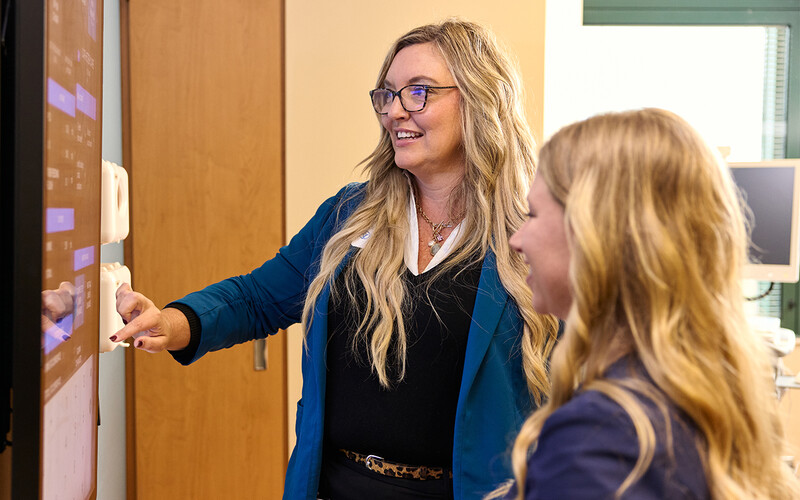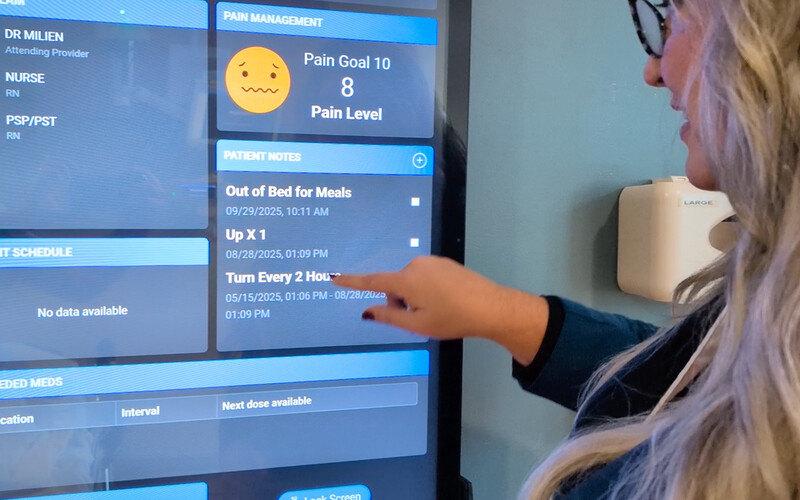Write-back functionality allows clinicians to type or speak care notes for real-time syncing with Epic, so they don’t have to wait to put those notes into a computer. “Whatever we can do to take away barriers that pull nurses away from patient care is always a win,” Foust-Cofield says.
For patients, having ready access to information about their care helps to alleviate anxiety and increase transparency. “The physician can pull up lab work and other results on the whiteboard and review that with the patient in real time,” Foust-Cofield adds.
To protect patient privacy, Reid clinicians must badge in to the whiteboard for it to display HIPAA-protected information, she says.
The potential to streamline communication is a critical benefit of digitized tools in patient rooms, according to Jill Seys, a digital health strategist with the Healthcare Information and Management Systems Society. Manual communication methods — such as dry-erase boards, written orders or electronic communications not visible within the workflow — introduce delays and heighten the risk of discrepancies as information is exchanged, she says.
With smart room technologies generally, Seys adds, “there’s a real opportunity to enhance the workflow and augment effective team communication.”
RELATED: How are health systems updating patient rooms to improve experiences?
Interactive Displays for Real-Time, Personalized Updates
In Boston, Brigham and Women’s Hospital collaborated with vendors in 2021 to see how digital whiteboards affected patients’ emergency department experiences. Their study involved 50 patients who had whiteboards and 50 patients who did not. The displays included essential information, such as the status of lab tests and whether patients were considered a fall risk.
Overwhelmingly, patients preferred the whiteboards, saying they felt more informed about their care and better prepared for discharge.
Dr. Peter Chai, who led the study, is an emergency physician and associate professor of emergency medicine at Brigham and Women’s. He notes that in the ED’s chaotic, unpredictable environment, patient communication can be challenging.
“A lot of times, patients are kept in the dark, mostly because we as clinicians are also in the dark about what kind of imaging studies they’re going to get or who will see them,” Chai says. “We see this whiteboard as a strategy to update patients in real time and provide them with more knowledge and guidance about what’s happening.”















